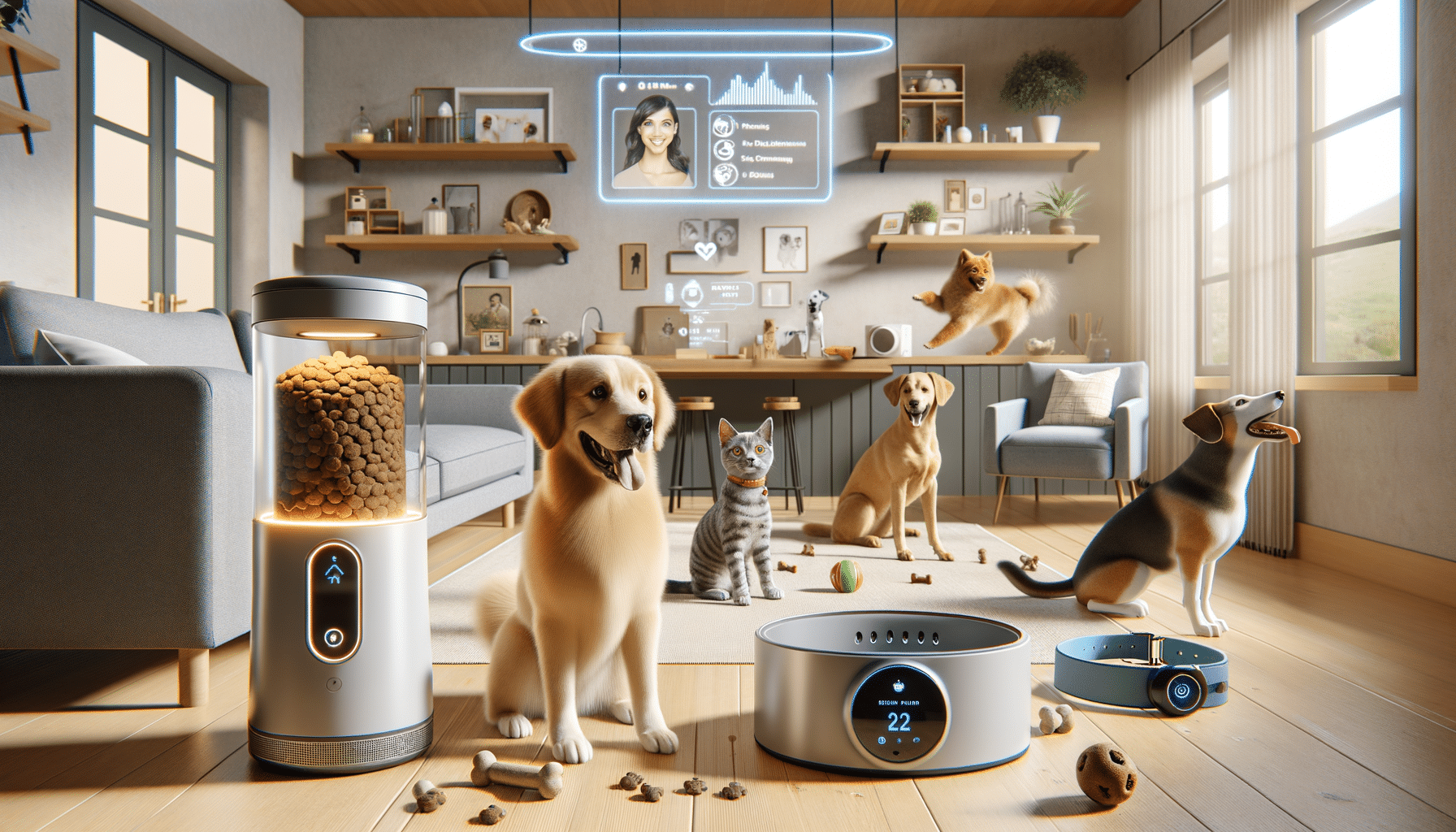AI-Powered Dog Training: Smart Devices for Better Communication and Behavior
Introduction to AI in Dog Training In recent years, the integration of artificial intelligence (AI) in various sectors has opened up new possibilities, and the realm of dog training is no exception. AI-powered dog training devices are transforming the way pet owners and trainers communicate with their canine companions, offering innovative solutions to age-old challenges.

Introduction to AI in Dog Training
In recent years, the integration of artificial intelligence (AI) in various sectors has opened up new possibilities, and the realm of dog training is no exception. AI-powered dog training devices are transforming the way pet owners and trainers communicate with their canine companions, offering innovative solutions to age-old challenges. These smart devices leverage advanced technologies to enhance training techniques, making the process more efficient and effective. This article delves into the fascinating world of AI in dog training, exploring its benefits, applications, and the future it holds for pet owners and their four-legged friends.
How AI Enhances Communication with Dogs
One of the primary benefits of AI in dog training is its ability to bridge the communication gap between humans and dogs. Traditional training methods often rely on repetitive commands and physical cues, which can sometimes lead to misunderstandings or inconsistent results. AI-powered devices, however, utilize sophisticated algorithms to interpret a dog’s behavior and respond accordingly. These devices can recognize vocal commands, gestures, and even emotional cues from dogs, allowing for a more nuanced and responsive training experience.
For instance, AI devices equipped with voice recognition can distinguish between different commands and tones, ensuring that dogs receive clear and consistent instructions. Additionally, some devices use machine learning to adapt to a dog’s unique behavior patterns, personalizing the training process. This level of customization not only improves communication but also strengthens the bond between pet and owner, as dogs feel more understood and engaged.
- Voice recognition for clear commands
- Machine learning for personalized training
- Emotional cue interpretation for responsive interaction
AI Devices for Behavior Improvement
Behavioral issues in dogs, such as excessive barking, aggression, or anxiety, can be challenging for pet owners to manage. AI-powered training devices offer innovative solutions to these problems by providing real-time feedback and intervention. For example, some devices are designed to monitor a dog’s behavior continuously and provide corrective measures when undesirable actions are detected.
These devices can emit sounds, vibrations, or even dispense treats to reinforce positive behavior and discourage negative actions. By using AI to analyze behavior patterns, these tools can identify triggers and suggest tailored interventions, making it easier for owners to address specific issues. Moreover, the data collected by these devices can be invaluable for veterinarians and professional trainers, offering insights into a dog’s behavior that might not be apparent through observation alone.
- Real-time feedback for immediate correction
- Behavior analysis for targeted interventions
- Data collection for professional insights
The Role of AI in Training Efficiency
AI technology not only enhances communication and behavior management but also significantly improves the efficiency of training sessions. Traditional training methods can be time-consuming and require a great deal of patience and consistency. AI-driven devices streamline the training process by automating repetitive tasks and providing instant feedback, allowing pet owners to focus on building a positive relationship with their dogs.
For example, AI can automate the scheduling of training sessions, track progress, and adjust difficulty levels based on a dog’s performance. This automation reduces the burden on pet owners and ensures that dogs receive consistent training, which is crucial for effective learning. Furthermore, AI devices can simulate various training scenarios, helping dogs adapt to different environments and situations without the need for extensive in-person training.
- Automation of training schedules
- Progress tracking and difficulty adjustment
- Simulation of training scenarios
The Future of AI in Dog Training
As AI technology continues to evolve, its applications in dog training are expected to expand, offering even more sophisticated tools for pet owners and trainers. Future advancements may include devices that can interpret a wider range of emotions, predict behavior based on past patterns, and offer virtual reality training environments for immersive learning experiences.
Additionally, the integration of AI with other technologies, such as the Internet of Things (IoT), could lead to the development of smart collars and leashes that provide real-time data on a dog’s health and activity levels. These innovations have the potential to revolutionize not only training but also overall pet care, ensuring that dogs lead healthier, happier lives.
While the future is promising, it’s essential for pet owners to approach AI-powered training with an understanding of its limitations. Human interaction and empathy remain irreplaceable components of dog training, and AI should be viewed as a complementary tool rather than a replacement for traditional methods.
Conclusion: Embracing AI for Better Dog Training
AI-powered dog training devices are reshaping the landscape of pet care, offering tools that enhance communication, improve behavior, and increase training efficiency. By embracing these innovations, pet owners can provide their dogs with a more engaging and effective training experience. However, it is crucial to remember that AI should complement, not replace, the human touch that is vital in building a strong bond between dogs and their owners. As technology advances, the possibilities for AI in dog training are limitless, promising a future where smart devices play an integral role in nurturing well-behaved and happy pets.